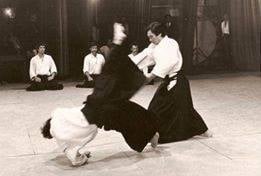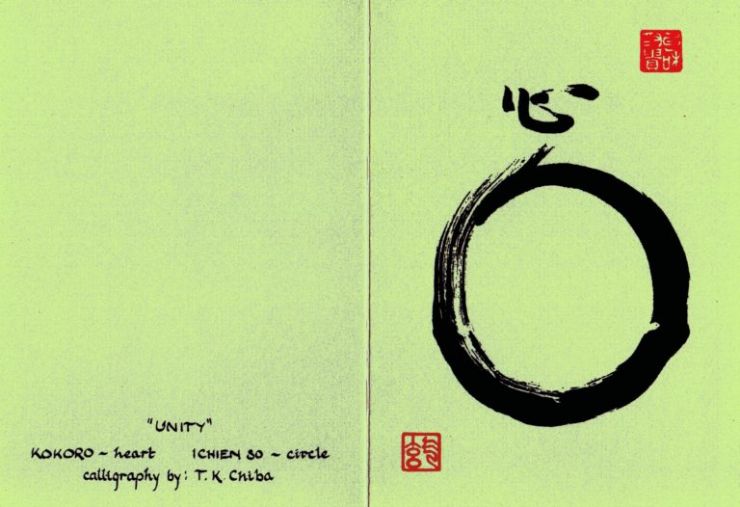Self Defence
The main problem with Aikido as a self defence art is that the aim of Aikido is to resolve conflict with the minimum damage to the attacker and the techniques reflect this attitude.
The training tends to reflect this attitude and students immediately begin to train in what are very advanced techniques. It is most difficult to control an aggressor and often this "problem" is solved by using compliant "attackers".
This approach is wrong. The first lesson must be do not get hit rather than immediately beginning with techniques which have no value at all until the basic principles are understood.
Basic training should teach basic principles not advanced techniques.
The first principle is get off the line. It is enough for a beginner to train simply in body movement and evasion rather than attempting to execute techniques in the first few practice sessions.
Do Not Get Hit
This relates to the entire body not simply blocking or evading a single blow.
Irrimi means to enter to the side along the line of attack. Even so defence must be maintained - often you shall see the arms drop or the hands reach out to "secure" a technique.
Below the arms is hito emi making the body small by sharpening the triangular posture from which the art is performed. The sword cut is eschewed to emphasise the angle of entry.
Along the line of attack not around.
The secret of Aikido is in the triangles. Therefore, the often quoted Aikido is a circular art is incorrect and moving in a circular manner is also incorrect. You are easily unbalanced or resisted if you are "spinning around".
AI – Harmony
No other principle in Aikido has been more misunderstood or misrepresented than the principle of harmony. Where harmony already exists there is no need for Aikido techniques.
Many teachers demand harmony from students from their first training sessions. Little or no resistance at all is given, with the receiver actively aiding his partner in the execution of the technique. Initially Tori must harmonise with Uke by seeking out his weak points so as to unbalance him. Uke must give a sincere, accurate and committed attack. Tori must develop the confidence to move accurately in time and space to defeat the attack. Any harmony from Uke defeats the purpose of keiko.
At an advanced level, Uke may have to harmonise once his balance is broken so as to execute a safe breakfall. The Aikidoka learns to harmonise with the attacker with the express purpose of breaking that harmony so as to destroy the attacker’s balance prior to the throw or pin. A properly executed technique breaks the timing, distancing and balance of the attacker.
Harmony in Aikido is the ability to cause the attacker to move where and when to the dictates of the Aikidoka.

Attitude To Training
As I said I have often chosen to use a particular shihan as an example of someone I admired and respected. Sekiya shihan was one among many. I learned many valuable lessons from him.
One being that I should seek out personal knowledge, insight and revelation. Knowledge given by Sekiya shihan would not be questioned (by me) but I had to question my understanding of that knowledge on the mat then it became personal knowledge rather than secondhand. This then gave me an insight into other areas and then after many years of experience I hope some revelation into the art of Aikido.
When asked what is the most important element that I could bring to Aikido I was told sincerity and a receptive mind.
Sekiya Shihan said: "If the techniques of a martial art are ineffective then we must question the philosophy of the art."
Know only the art of war and you lack wisdom.
Know only the art of peace and you lack courage.

